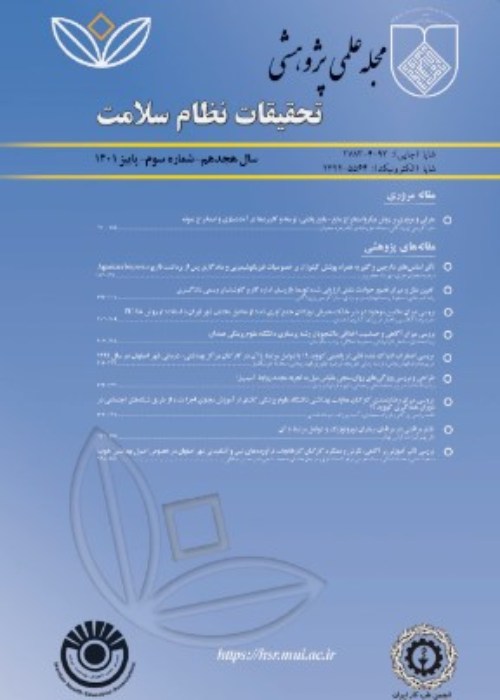Design of Hazard Analysis and Critical Control Point System in the Drinking Water Supply System of Isfahan from Source to the Consumption Point
Author(s):
Abstract:
Background
Provision of safe drinking water is one of the basic needs of every society and it will only be possible through preventive and comprehensive management of drinking water security programs such as HACCP. Hazard Analysis Critical Control Point (HACCP) is an internationally accepted process control system which includes recognition and determination of risk factor properties of processed products and the prediction and implementation of measures to preserve the ideal quality of the product during the production process, from supply to consumption point. This study aimed to design a comprehensive risk management framework, according to the HACCP system, as a method of drinking water quality management in Isfahan. Methods
In this research, the most important risks and risky events affecting water quality of the three sections of raw Zayandehroud River (Isfahan, Iran) water, Baba Sheikh Ali water treatment plant, and Isfahan’s drinking water distribution system was predicted, identified and analyzed. Practical solutions and measures for the monitoring control, and limitation of the risks in different phases from water supply to consumption point has been presented in the form of seven principles of HACCP system. Required information was obtained through field inspections done in the study area and also through related organizations. Findings and Conclusion
In this research it was concluded that there are various potential hazards caused by sectional changes in water quality during the treatment process due to seasonal changes, discharge of various pollutants especially by rural communities and recreational centers on the bank of Zayandehroud river, natural and sudden accidences, intentional and malicious acts, lack of appropriate leading of processes and a proportionate current treatment process, and the wide extent and antiquity of the Isfahan water distribution system. Conclusion
In order to gain ideal and high-quality drinking water, it is necessary to control discharging of pollutants in the upstream of the water intake with regard to the increasing trend of Zayandehroud river pollution, design an appropriate treatment process in the water treatment plant, and preserve the quality of existing water in the Isfahan water distribution system.Keywords:
Language:
Persian
Published:
Journal of Health System Research, Volume:7 Issue: 6, 2012
Page:
1102
magiran.com/p999760
دانلود و مطالعه متن این مقاله با یکی از روشهای زیر امکان پذیر است:
اشتراک شخصی
با عضویت و پرداخت آنلاین حق اشتراک یکساله به مبلغ 1,390,000ريال میتوانید 70 عنوان مطلب دانلود کنید!
اشتراک سازمانی
به کتابخانه دانشگاه یا محل کار خود پیشنهاد کنید تا اشتراک سازمانی این پایگاه را برای دسترسی نامحدود همه کاربران به متن مطالب تهیه نمایند!
توجه!
- حق عضویت دریافتی صرف حمایت از نشریات عضو و نگهداری، تکمیل و توسعه مگیران میشود.
- پرداخت حق اشتراک و دانلود مقالات اجازه بازنشر آن در سایر رسانههای چاپی و دیجیتال را به کاربر نمیدهد.
In order to view content subscription is required
Personal subscription
Subscribe magiran.com for 70 € euros via PayPal and download 70 articles during a year.
Organization subscription
Please contact us to subscribe your university or library for unlimited access!



